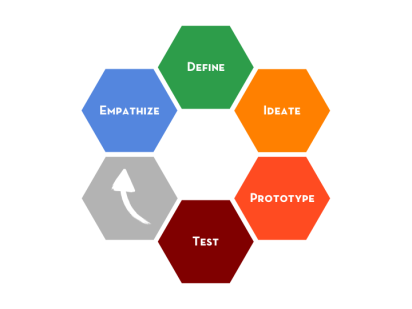By Austen Moye
In the most recent installment of the SEISA Speaker Series, Dr. Gordon Adomdza delivered his unique perspective and profound insight on the topic of Design Thinking. Growing up in Ghana, Dr. Adomdza has studied all over the world and has a distinct sense of perspective that quite literally spans across the globe. After receiving his Masters and Doctorate from the University of Waterloo in Ontario, Canada, Gordon was first introduced to the idea of Design Thinking through his research at Continuum Innovation right here in Boston. After discovering how the Design Thinking process worked and the wonders of what it was capable of, Dr. Adomdza fell in love with it and decided to specialize himself within that sector. Gordon developed a deeper and more thorough understanding of what Design Thinking encompasses, particularly through a Design & Innovation Consulting position with John Hancock, and now uses that knowledge to teach at multiple education institutions across the world.
Before his talk started at 6pm, the room was already overflowing with too many students and not enough places to sit. This is the kind of popularity Dr. Adomdza has garnered over his distinguished and impressive career. Students from all majors and disciplines came to not only hear Gordon speak, but to truly learn and understand how Design Thinking works. The Design Thinking approach looks at finding solutions to problems in the world by focusing on user-centered ideas. While many companies try to cater to their clients by brainstorming ideas internally, using the Design Thinking approach would radically change that by flipping it on its’ head and looking at issues from the clients’ perspective. The entire process can really be broken down into five basic steps…

The first step is to “empathize” with the user and to gain a better understanding of their experience. This can be done in a number of different ways such as depth interviews, diary studies, or simple observation. After learning more about the user’s total experience, it is time to define and ideate. The next phase builds on what was learned from empathizing to create a product that will address all of a user’s needs and issues. Using what was learned from the first step, it becomes easier to define the problem that needs to be addressed and begin ideation around that issue. The prototype and test steps are particularly important because it allows you to see if the solution you designed would actually be accepted in the user’s community. Before rolling it out on a mass scale, the validation of a personal user in the testing stage adds a lot of credibility to the design solution that was created.
The reason the Design Thinking process is important is because it engages and includes the people who will actually be affected by the outcome of the process in the design stages. When you think about it, why wouldn’t you include the person who will be using a product in the overall design of it? It simply makes logical sense. Because of how effective this process is, Dr. Adomdza believes that this will be the way of the future.


